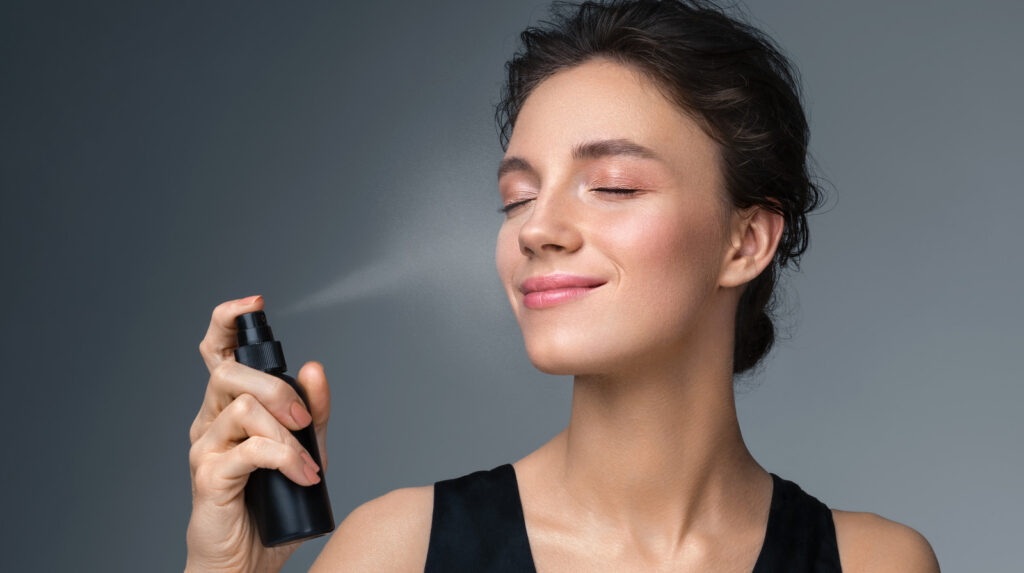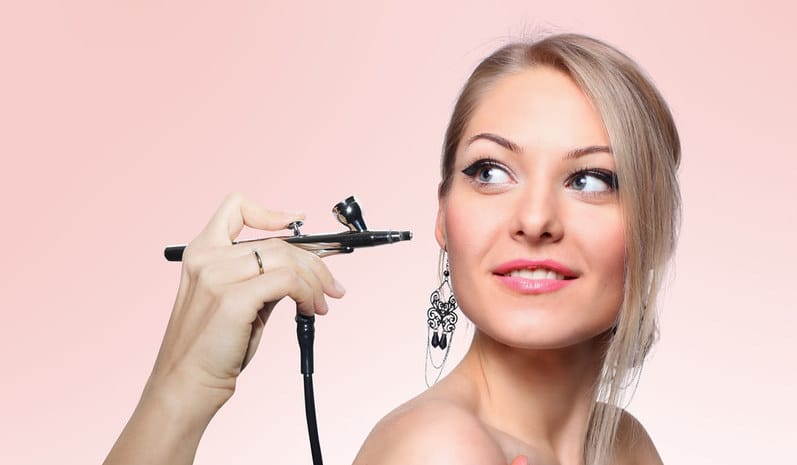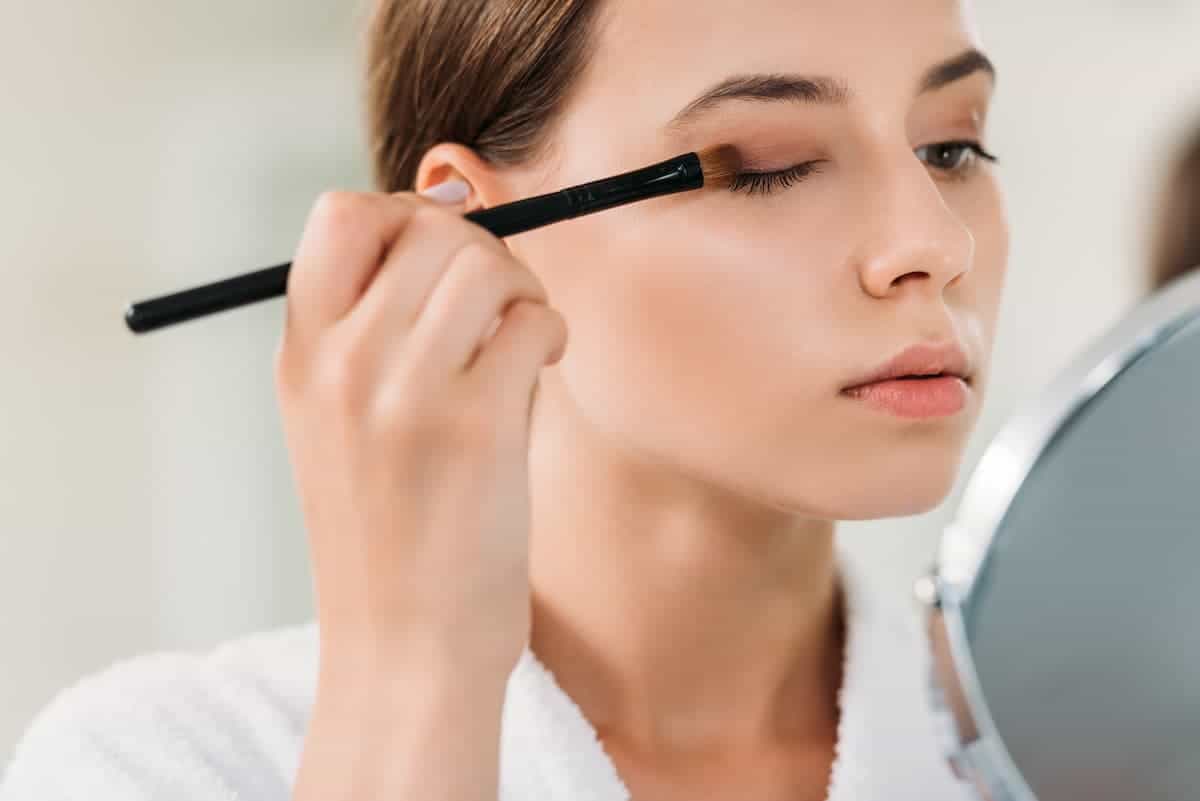
In the world of cosmetics, setting spray and primer have become essential tools for makeup enthusiasts and professionals alike. These products play a crucial role in achieving a flawless and long-lasting makeup look. In this article, we will explore the purpose and benefits of makeup setting spray, as well as provide guidance on the proper use of primer. By understanding the role of these products and learning effective application techniques, you can take your makeup game to the next level.
Part 1: Unveiling the Magic of Makeup Setting Spray
Defining Makeup Setting Spray:
Makeup setting spray, also known as finishing spray or fixing spray, is a product designed to prolong the wear of makeup and help it stay in place.
It typically comes in a spray bottle and contains ingredients that provide a light mist over the face, setting the makeup and creating a protective layer.
The Benefits of Makeup Setting Spray:
Prolongs Makeup Wear: Setting spray helps to extend the longevity of your makeup, preventing it from smudging or fading throughout the day.
Enhances Makeup Appearance: Setting spray can give your makeup a more seamless, airbrushed finish, making it look more natural and blended.
Increases Makeup Durability: By creating a protective barrier, setting spray helps to shield your makeup from external factors such as humidity, sweat, and oiliness.
Hydrates the Skin: Some setting sprays contain hydrating ingredients that can provide an added boost of moisture to your skin, giving it a fresh and dewy appearance.
How to Use Makeup Setting Spray:
After completing your makeup application, hold the setting spray bottle about 8-10 inches away from your face.
Close your eyes and mist the spray in a circular motion, ensuring that your entire face is covered.
Allow the spray to dry naturally without touching or blending it in.
If you prefer a more intense hold, you can repeat the process by layering the setting spray.
Part 2: Unleashing the Potential of Primer
Understanding Primer:
Primer is a preparatory product applied before makeup to create a smooth and even canvas for foundation and other cosmetics.
It typically comes in a gel, cream, or lotion form and is available in various types such as silicone-based, water-based, color-correcting, or illuminating.
The Benefits of Using Primer:
Smoothes the Skin: Primer helps to fill in fine lines, wrinkles, and pores, creating a smoother surface for makeup application.
Improves Makeup Longevity: By providing a base for makeup to adhere to, primer helps to extend the wear time of your cosmetics.
Enhances Makeup Pigmentation: Primer can intensify the color and vibrancy of your makeup, making it appear more vibrant and true to shade.
Addresses Specific Skin Concerns: Different types of primers cater to specific skin concerns, such as oil control, hydration, or color correction.

How to Apply Primer:
Start with a clean and moisturized face.
Dispense a small amount of primer onto your fingertips or a makeup brush.
Apply the primer onto specific areas of concern, such as the T-zone or areas with visible pores or texture.
Gently blend the primer into your skin using upward strokes, ensuring an even and seamless application.
Allow the primer to settle for a few minutes before proceeding with your foundation and other makeup products.
Makeup setting spray and primer are indispensable tools in achieving a flawless and long-lasting makeup look. While setting spray helps to lock in your makeup, providing longevity and a natural finish While setting spray helps to lock in your makeup, providing longevity and a natural finish, primer acts as a foundation for your makeup, creating a smooth and flawless canvas. By incorporating these products into your beauty routine, you can enhance the overall appearance and durability of your makeup.
Remember, when using setting spray, it’s essential to choose a formula that suits your skin type and desired finish. Matte setting sprays are ideal for controlling excess oil and creating a velvety finish, while dewy or hydrating sprays can add a luminous glow to dry or dull skin. Experimenting with different formulas will help you find the perfect setting spray for your needs.
Similarly, primer selection should be based on your skin concerns and makeup goals. If you have large pores or uneven texture, a silicone-based primer can help create a smoother base. Water-based primers are excellent for hydrating the skin and maintaining a fresh look. Color-correcting primers can address specific complexion issues, such as redness or discoloration.
To make the most of primer, remember to apply it after your skincare routine and before foundation. Allow the primer to set for a few minutes to ensure optimal results. Additionally, consider using different primers for specific areas, such as an eyeshadow primer to prevent creasing or a lip primer to enhance the longevity of lipstick.
Lastly, practice moderation when using setting spray and primer. Applying too much setting spray can lead to a heavy or overly dewy appearance, while using an excessive amount of primer may cause makeup to slide off or appear cakey. Start with a light application and build up as needed.
In conclusion, makeup setting spray and primer are essential components in achieving a flawless and long-lasting makeup look. Setting spray locks in your makeup, providing durability and a natural finish, while primer creates a smooth canvas for flawless application. By understanding their purpose and incorporating them into your routine, you can elevate your makeup game and enjoy a flawless, enduring look throughout the day.
Remember to explore different brands and formulations to find the products that work best for your skin type and makeup preferences. With the magic of setting spray and primer, you can confidently face any occasion with a flawless and radiant complexion.








